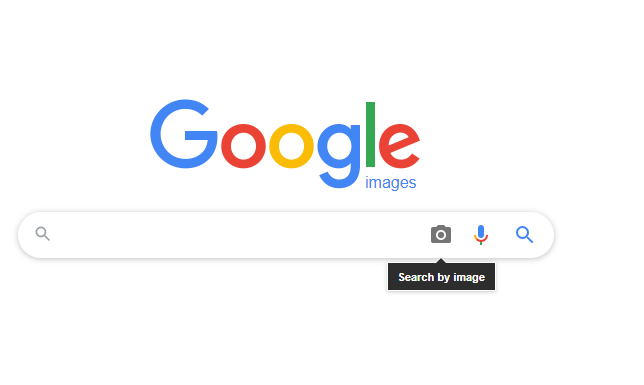These days the news changes so suddenly and frequently that it can be hard to keep up with everything that is happening … especially when we are bombarded from all sides with not only the real news, but the “fake news,” as well. Today we have all the news right at our fingertips thanks to the internet, not to mention all the news that gets circulated through social media.
As we scroll through the news stories we see daily, how do we tell which ones are real and which ones are fake? After all, we wouldn’t want to circulate something that isn’t true. Fake news often ends up going viral due to people sharing it with all their contacts before checking whether the source of the story is true or not.
It is also getting increasingly difficult to tell which news is real and which is fake news, as much of the fake news is laced with a little bit of truth. Fake news comes in many different shapes and sizes, but two of the main kinds are stories that are completely false and then stories that are mostly false but do have a little bit of truth in them, as mentioned previously.
What makes it all the more confusing, though, is that there are many people who claim something is fake news even though it is factually correct, in an attempt to discredit it because they don’t agree with it or because it makes them uncomfortable.
What’s the Difference?
So what is the difference between disinformation, misinformation and fake news? Some may think its all one and the same thing but there is some dissimilarity which set them apart from each other.
Misinformation is false information that is spread around, regardless of the intent behind it. Disinformation is information that is completely untrue and intended to deceive the general public and then spread around via the media outlets.
Fake news, on the other hand, is based on inaccurate and sensationalistic reports that are meant to grab our attention and intentionally deceive us by being presented to us as news.
Fake news often causes great damage to reputations and can also end careers, ruin businesses and destroy the futures of those who have been targeted by such reports. It is therefore imperative that we are on guard against spreading fake news and disinformation, and to do so we need to know how to tell the difference between real news and fake news.
Discerning Fact From Fiction
According to a poll done by Gallup, 33 percent of people in America have no trust at all in the news media, whereas only nine percent of people have a great deal of trust in the news. That is quite a difference, but most people are somewhere in the middle.
Never has it been more of a challenge to sort through the true from the false, as today we have to wade through a proliferation of fake news sites, social media and even messages from our friends and family. Many people share news stories without first verifying the validity of the story. It is because of this that fake news spreads so wide and so fast.
With this being the case, how can we tell the difference between fake news and the real deal? Most fake news is built around a sensationalistic headline, so a good place to start would be to evaluate how the headline makes you feel before even reading any further.
Most fake news headlines will be written with the specific intent to work on one’s emotions, so if you have an overly emotional reaction to a headline, it’s best to stop and consider. This is especially true if the headline is written in all caps letters and with excessive punctuation. Our gut will often warn us immediately upon reading one of these headlines, so be sure to listen to it.
Here are a few things to keep in mind when searching for news stories.
Fact Check All Fishy Headlines
One of the quickest and easiest ways to see whether something is real or just fake news is to type the exact headline (the same spelling and grammar) into Google. If it is fake news then there will usually be links exposing it as fake news.
Alternatively you can also check on Snopes.com and also Poynter.org. These two sites are in the business of debunking fake news, so they are a good source to check with if you are ever in doubt about the validity of what you are reading.
It is good to be skeptical about what you read and not just believe it all because it is supposed to be news. If a headline only appears on one website but nowhere else, it is a sure sign that it is not real news. Whenever possible, cross reference your searches. If a news item appears on multiple and reputable sites, then there is a good chance that it is true.
A helpful way to find out whether what you are reading is from a reliable source, is to go to the “About” page on their website and read a little more about what the site is all about.
More often than not they will clearly state if they are a satirical site or what their political views are etc. When a source is reputable, they will include hyperlinks in their article which will lead to more research, while fake news often contains numerous grammatical and spelling errors.
When reading through the article, ask yourself whether it is drawn up of facts or rooted in opinions. When a piece is based on facts there will be references backing it up, whereas pieces that are based on opinions will be driven solely by debate and arguments with no verifiable facts.
Don’t Go Viral – Go Smart
The way modern technology has progressed, it is now easier than ever before to get something to go viral in just a matter of minutes. It’s for this reason that it really is crucial to make absolutely sure before you forward a link to a news source or site or forward an image that it really is what it says it is and not just fake news or disinformation.
Most of the time we will forward something on to our contacts (whether they be friends, family or co-workers) without properly reading through, and checking on what we are sending.
Perhaps it is just a picture with a headline, or it could just be a link to a story that has been forwarded to us. Before you click forward, or send, be sure to follow the steps above and thoroughly check out what you are sending.
If you want to check an image and make sure it is really authentic, there is a slightly different formula to follow. To start with, open up your web browser and then type in www.images.google.com.

Next, simply left click on the camera icon and then either upload an image from your computer or you can copy and paste the image URL or link from an image online.

This is called reverse image searching and it is very useful to check whether or not the image you have been sent is authentic or just fake news. With all the different social media sites and chat programs, forwarded images with text have become the norm.
However, it’s crucial to keep our eyes peeled and not become caught in the dark, tangled web of viral fake news and disinformation. It is better to be smart than viral.
Reliability Is Key
One key point to remember is that it is all about reliability. Make sure that your sources are not only credible but also reliable. Keep in mind that if you want to pass along any article or news post, you need to make sure that it is based on fact and not on opinion. That is why it is necessary to always cross check all news sources and check the reliability of the source.
It’s also important to double check anything before you send it along because if you pass along something that is later found to be fake news, it could seriously damage your own reputation for being reliable or credible.
While this sounds a mite far-fetched, it is nonetheless true. With social media exploding around us, one piece of fake news could go viral once you pass it along and before you know it you will be labeled as the person who sent it (even if it didn’t originate with you) and then your credibility will be called into question with future messages or posts.
A good system for checking reliability is to follow this simple formula:
- Currency – Make sure the information is up to date.
- Relevance – Is the information relevant?
- Authority – Check where the information is published and who the author is.
- Accuracy – Is the article supported by references?
- Purpose – What is the motive behind the information?
Keeping these points in mind will really help to prevent the spreading of any fake news or disinformation in the future. It will also ensure that people won’t doubt your credibility and your reputation will remain firmly intact.
As always, if you’re needing more information on how to separate real news from that which is fake online, consider reaching out to HelpCloud Technicians for remote support.
